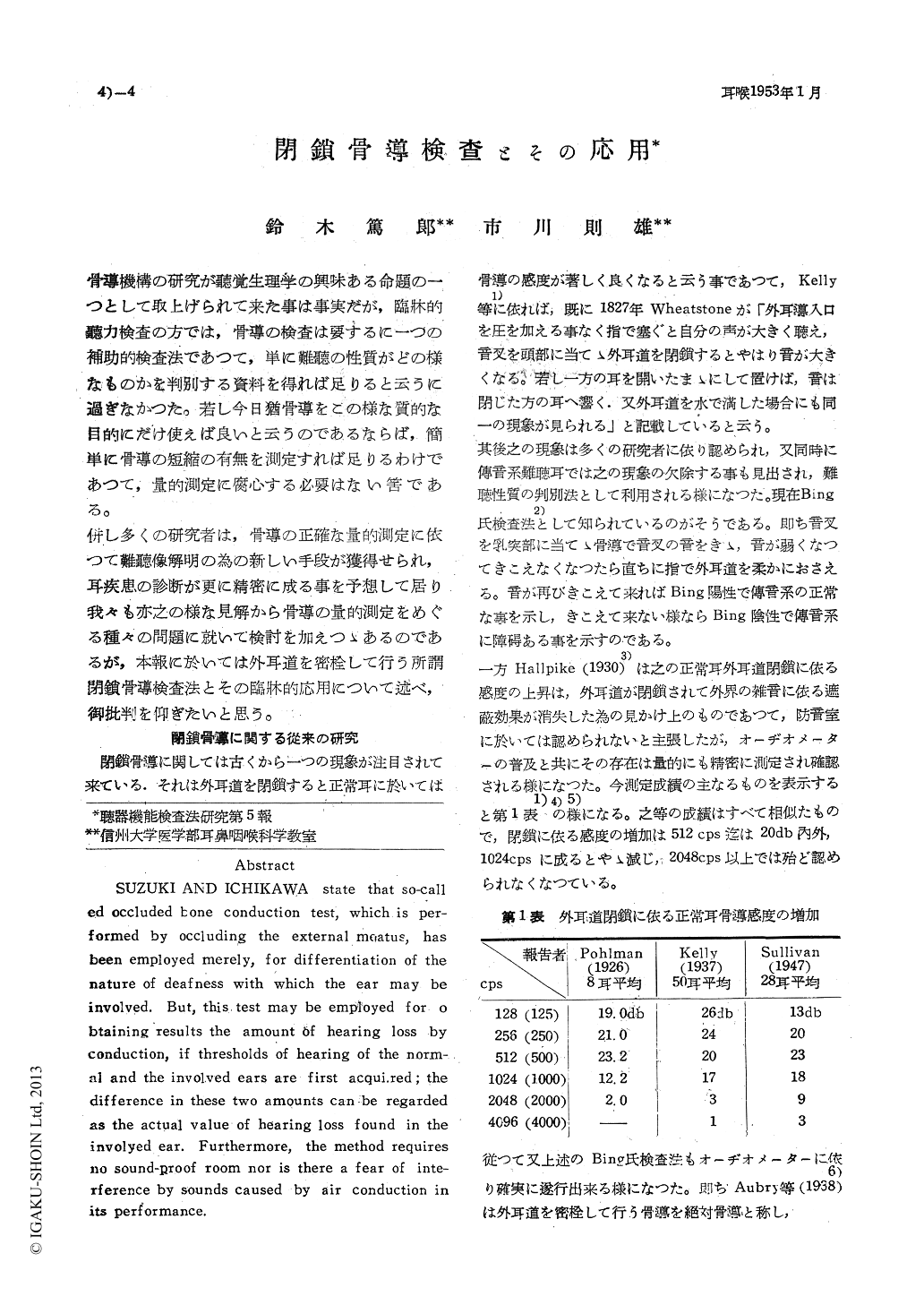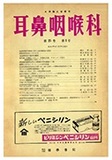- 有料閲覧
- 文献概要
- 1ページ目
骨導機構の研究が聽覚生理学の興味ある命題の一つとして取上げられて来た事は事実だが,臨牀的聽力検査の方では,骨導の検査は要するに一つの補助的検査法であつて,単に難聽の性質がどの樣なものかを判別する資料を得れば足りると云うに過ぎなかつた。若し今日猶骨導をこの樣な質的な目的にだけ使えば良いと云うのであるならば,簡単に骨導の短縮の有無を測定すれば足りるわけであつて,量的測定に腐心する必要はない筈である。
併し多くの研究者は,骨導の正確な量的測定に依つて難聽像解明の為の新しい手段が獲得せられ,耳疾患の診断が更に精密に成る事を予想して居り我々も亦之の樣な見解から骨導の量的測定をめぐる種々の問題に就いて検討を加えつゝあるのであるが,本報に於いては外耳道を密栓して行う所謂閉鎖骨導検査法とその臨牀的応用について述べ,御批判を仰ぎたいと思う。
SUZUKI AND ICHIKAWA state that so-call ed occluded Lone conduction test, which is per-formed by occluding the external meatus, has been employed merely, for differentiation of the nature of deafness with which the ear may be involved. But, this test may be employed for o btaining results the amount of hearing loss by conduction, if thresholds of hearing of the norm-al and the involved ears are first acqui.red; the difference in these two amounts can be regarded as the actual value of hearing loss found in the involyed ear. Furthermore, the method requires no sound-proof room nor is there a fear of inte-rference by sounds caused by air conduction in its performance.

Copyright © 1953, Igaku-Shoin Ltd. All rights reserved.


